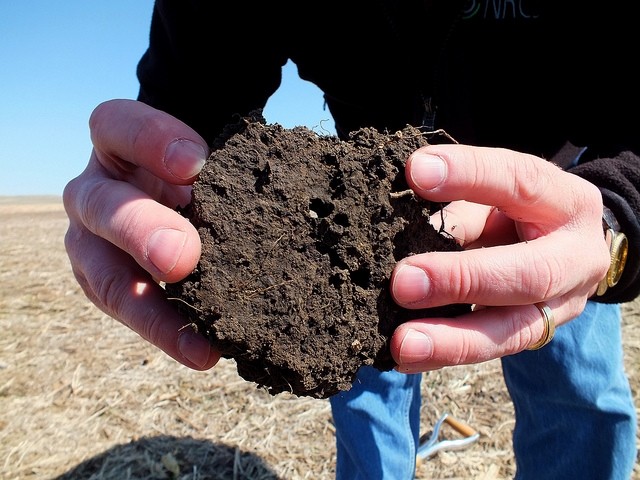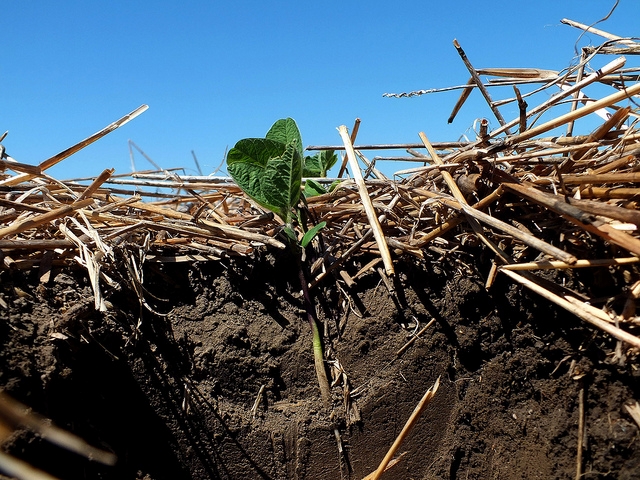
“Soil is a life-sustaining natural resource that often goes unnoticed,” said Anthony O'Geen, UC Cooperative Extension soil specialist in the Department of Land, Air and Water Resources at UC Davis. “But soil is fundamental for production of food, animal feed, fuel and natural fiber as well as performing many critical ecosystem functions, like filtering water, cycling nutrients and maintaining biodiversity.”
Moreover, soil is an extremely limited natural resource. Three-quarters of the earth is covered by water. Half of what's left is desert, swamps, frozen solid or mountainous – areas unsuitable for agricultural production. Land that's rocky or floods annually further reduces space for growing crops, leaving just a tiny fraction of the earth's surface as arable land.
These limited areas of productive soils on earth are threatened by expanding urban development, unsustainable soil management practices, pollution and overgrazing. Other natural resources – like air and water – garner more attention as they enjoy much greater visibility, while soil is kept in the dark and treated like dirt. UC Agriculture and Natural Resources is taking part in the year-long celebration of soil to help give soil the recognition it deserves and promote policies that will protect the earth's soil for future generations.
O'Geen is the chair of the Soils and Biochemistry Graduate Group at UC Davis. As a UCCE specialist, he said, he is trying to get students more involved in outreach and sees the International Year of Soils as an ideal rallying point for 2015. The graduate students kicked off the Year of Soils in December by sponsoring a “PED Talk” competition. (Ped is a scientific term for an aggregate of soil. It was selected in a nod to the world-famous TED Talks.)
Graduate student Katy Dynarski won first prize and $250 for her five- minute talk titled “I ♥ soil.”
“We're continuously taught throughout our lives that soil is something bad,” said Dynarski in her presentation. “You ‘soil' your reputation. You keep ‘dirty' secrets.… In this way, we create a fundamental disconnect between ourselves and soil and we are able to banish it to the realm of things that just don't matter.”
Another student, Jessica Chiartas, invoked the world's celestial connections in her presentation.

Messages about the significance of soil conservation will be shared with California state legislators at Ag Day at the Capitol in Sacramento on March 18. An annual celebration of the state's diverse agricultural industry, the event draws farmers, 4-H members, commodity groups and agencies who work with the state's agriculture industry – including the UC Division of Agriculture and Natural Resources – to the state capitol's front steps. Elected officials, their staff, California state workers and the public visit and learn about California agriculture.
Other UC activities marking the International Year of the Soils are aimed at extending to farmers ways they can preserve and protect the soil on their California farms. The Conservation Agriculture Systems Innovation Center (CASI) – a collaborative project coordinated by UC that involves farmers, researchers and representatives of public and private agencies and environmental groups – is a leader in promoting soil health. The group conducts research and extension activities aimed at helping landowners maintain and improve their farms' productivity with soil management systems like cover crops, reduced tillage and no-till, and crop rotations. These systems are intended to cut sediment loss from farms and ranches, reduce dust emissions, conserve water and sequester carbon.
CASI has outlined three soil-health initiatives to accomplish during the International Year of Soils. The group will hold a series of demonstration evaluations and information-sharing field events throughout the year. The soil health outcomes from the long-term conservation agriculture and cover cropping research project at the UC West Side Research and Extension Center will be presented to 100 different audiences. A 10-segment soil health video series will be developed along with the USDA's Natural Resources Conservation Service.
The videos will present the underlying theory and principles of soil health with particular emphasis on conditions in the Central Valley. It will include vignettes about local farmers who have successfully improved soil function on their land while lowering production costs.
“Too often it seems that a big part of the information we get on soil health comes from far away in regions not at all like what we have in California,” said Dennis Chessman, NCRS state agronomist headquartered in Davis. “What we really need are examples of what works right here in the Central Valley and that's what we're trying to now develop.”
Mitchell, who has devoted his 20-year career to researching and promoting practices to improve soil health, said the International Year of Soils is adding momentum to ongoing complimentary soil health efforts in the U.S. and worldwide that have been building slowly for years.
“We need healthy soils now and in the future to provide a secure food supply to the world population,” Mitchell said. “The International Year of the Soil will help us reach the public with this fundamental work.”
An initiative to maintain and enhance sustainable natural ecosystems is part of UC Agriculture and Natural Resources Strategic Vision 2025.